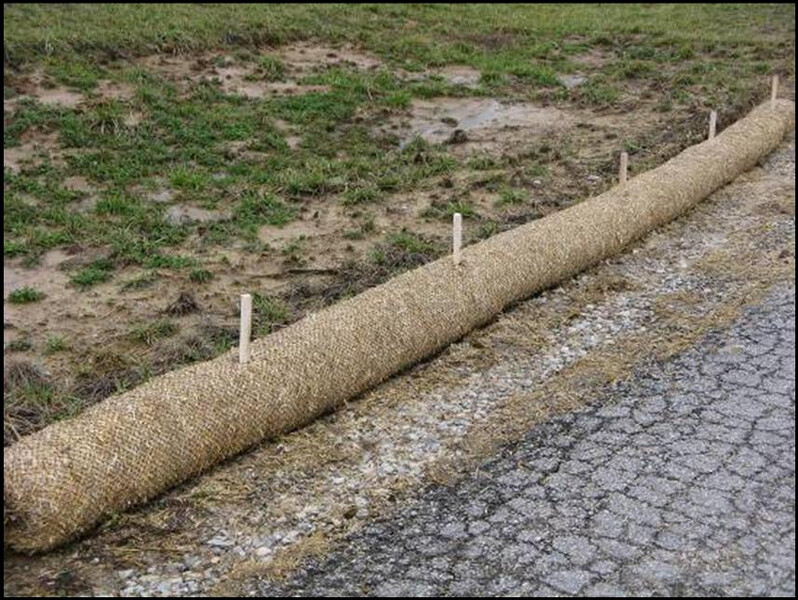Expert Services by Memphis Erosion Control Solutions excavation
Wiki Article
Ideal Practices for Erosion Control in Building And Construction Projects
Are you working on a building and construction task and concerned concerning disintegration control? In this article, we will lead you through the ideal methods for avoiding erosion on your website. hydroseeding. Get all set to deal with erosion head-on and ensure the success of your building and construction job.5 Vital Disintegration Control Methods

To effectively control disintegration on your building site, you'll require to carry out vital methods such as slope stabilization and sediment control steps. Incline stablizing is important in stopping dirt erosion on high inclines. You can achieve this by utilizing approaches like terracing, which includes developing horizontal steps on the incline to decrease water flow and promote the absorption of rainwater. One more reliable technique is the usage of disintegration control blankets or mats, which are positioned on the incline and help preserve soil particles while permitting vegetation to grow. Sediment control steps are additionally crucial to avoid debris overflow right into neighboring water bodies. One efficient method is the installment of silt fencings along the perimeter of the building website. These fencings work as obstacles, catching sediment-laden water and enabling it to work out before it gets to the water bodies. Furthermore, you can make use of debris basins, which are short-term retention fish ponds designed to trap sediment and permit water to gradually drain pipes off. Applying these vital disintegration control methods will help reduce the negative ecological influence of your construction job and ensure compliance with policies.
Reliable Debris and Overflow Monitoring

You can successfully handle debris and drainage in your building and construction project by applying appropriate disintegration control measures. Another vital method is the execution of disintegration control coverings or mats. By carrying out these disintegration control steps, you can properly manage debris and drainage in your construction job, minimizing the effect on the setting and abiding with regulatory demands.
Trick Considerations for Slope Stabilization
You need to carefully take a look at the incline's qualities, such as its angle, drain, and composition patterns. Look for indicators of disintegration, such as subjected roots, splits, or down soil.Once you have recognized the unpredictable areas, you can begin implementing actions to support the slope. One common approach is the usage of keeping walls or terracing to develop a series of level actions, which can help disperse the weight and stop additional disintegration. One more option is to grow greenery on the incline, as the origins can aid anchor the dirt and control disintegration. Additionally, mounting erosion control coverings or mats can provide instant protection while plant life ends up being recognized.
It's important to on a regular basis keep track of the maintained slopes to guarantee their effectiveness. Maintain an eye out for any kind of signs of motion or erosion, and take prompt action if essential. Routine upkeep, such as examining and fixing any type of damaged measures, is likewise important to ensure long-term security.
Ideal Practices for Greenery and Dirt Defense
One efficient way to secure greenery and dirt on slopes is by routinely examining for indications of disintegration and taking immediate action if next essential. Begin by evaluating the slope for any type of signs of erosion, such as revealed roots, bare soil spots, or debris accumulation at the bottom. Implement disintegration control measures such as setting up disintegration control coverings, mulching, or even building preserving wall surfaces if needed.Carrying Out Correct Drainage Solutions
To properly implement proper drain systems, it's critical to consider the slope gradient and soil kind. Comprehending these elements is vital when it comes to handling water circulation and protecting against disintegration. The incline gradient plays a substantial duty in determining just how water crosses the wikipedia reference land. Steeper inclines can cause quicker water flow, increasing the risk of disintegration and flooding. On the other hand, gentler slopes enable water to stream much more slowly, decreasing erosion capacity. By evaluating the slope gradient, you can design an effective drainage system that accommodates the all-natural water activity.Sandy soils often tend to drain faster due to their rugged texture, while clay soils have go a slower water drainage rate due to their portable nature. Additionally, thinking about the dirt qualities assists avoid waterlogging, which can lead to inadequate plant growth and damage to frameworks.
Conclusion
In conclusion, when it comes to erosion control in building and construction jobs, you should follow these ideal techniques. Consider incline stabilization techniques to make sure the security of the website. By complying with these important practices, you can successfully regulate erosion and make certain the success of your building and construction project.To effectively regulate disintegration on your construction site, you'll need to execute essential methods such as slope stabilization and sediment control procedures. Incline stablizing is essential in preventing dirt disintegration on steep slopes. Another reliable technique is the use of disintegration control coverings or floor coverings, which are positioned on the incline and aid retain dirt bits while allowing greenery to grow. One more alternative is to grow greenery on the slope, as the origins can help secure the soil and control disintegration. Implement erosion control measures such as mounting erosion control coverings, mulching, or even building retaining wall surfaces if required.
Report this wiki page